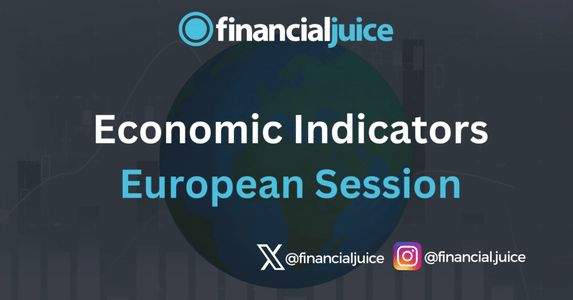
Week Ahead: Economic Indicators (EU)
Hey, Traders!
For the April 1st week, here is a list of all of the major economic indicators being released during the EU Session, with a brief synopsis of what they represent and what to possibly expect from the markets in reaction.
Tuesday 2nd April
03:50 – 04:30 ET
Euro-Area Manufacturing PMI
Based on monthly questionnaire surveys of selected companies, the Purchasing Managers’ Manufacturing Index (PMI) offers an advance indication on month-to-month activity in the private sector economy by tracking changes in variables such as output, new orders, stock levels, employment and prices across manufacturing industries. The final index for the current month is released roughly a week after the flash.
What to expect:
Investors need to keep their fingers on the pulse of the economy because it dictates how various types of investments will perform. By tracking economic data such as the ISM manufacturing index in the U.S. and the Markit PMIs in the U.S. and elsewhere, investors will know what the economic backdrop is for the various markets. The stock market likes to see healthy economic growth because that translates to higher corporate profits. The bond market prefers less rapid growth and is extremely sensitive to whether the economy is growing too quickly and causing potential inflationary pressures.
08:00 ET
German HICP Prelim
The Harmonized Index of Consumer Prices is an index of consumer prices calculated and published by Destatis, on the basis of a statistical methodology that has been harmonized across all EU member states. HICP is a measure of prices used by the Governing Council of the EU to define and assess price stability in the euro area as a whole in quantitative terms.
What to expect:
The consumer price index is the most widely followed indicator of inflation. An investor who understands how inflation influences the markets will benefit over those investors that do not understand the impact. In countries such as Germany where monetary policy decisions rest on the central bank’s inflation target, the rate of inflation directly affects all interest rates charged to business and the consumer. As a member of the European Monetary Union, Germany’s interest rates are set by the European Central Bank.
By tracking inflation, whether high or low, rising or falling, investors can anticipate how different types of investments will perform. Over the long run, the bond market will rally (fall) when increases in the CPI are small (large). The equity market rallies with the bond market because low inflation promises low interest rates and is good for profits.
Wednesday 3rd April
05:00 ET
Eurozone CPI Flash
The harmonised index of consumer prices (HICP) is a measure of consumer prices used to calculate inflation on a consistent basis across the European Union. Changes in the index provide an estimate of inflation, as targeted by the European Central Bank (ECB). Eurostat provides statistics for the EU and Eurozone aggregates, individual member states and for the major subsectors. Over the short-term, the central bank focuses on a number of core measures which seek to strip out the most volatile components and so give a much better guide to underlying developments. Amongst these, financial markets normally concentrate upon the narrowest gauge which excludes energy, food, alcohol and tobacco.
What to expect:
By tracking inflation, whether high or low, rising or falling, investors can anticipate how different types of investments will perform. Over the long run, the bond market will rally (fall) when increases in the HICP are small (large). The equity market rallies with the bond market because low inflation promises low interest rates and is good for profits.
Eurozone Unemployment Rate
The unemployment rate measures the number of unemployed as a percentage of the labor force.
What to expect:
Unemployment data is closely monitored by the financial markets. These data give a comprehensive report on the state of the economy and its future direction. A rising unemployment rate can be a warning sign of hard times, while a low rate can be a warning of inflation as wages are bid up to attract labor.
Thursday 4th April
05:00 ET
Euro Area Composite & Services PMI
Services –
The Services Purchasing Managers’ Index (PMI) provides an estimate of service sector business activity for the preceding month by using information obtained from a representative sector survey incorporating transport and communication, financial intermediation, business services, personal services, computing and IT and hotels and restaurants. Results are synthesised into a single index which can range between zero and 100.
Composite –
The Composite PMI Index measures the activity level of purchasing managers in both sectors (manufacturing and services). A reading above 50 indicates expansion in the sector; a reading below 50 indicates contraction.
What to expect:
A reading above (below) 50 signals rising (falling) activity versus the previous month and the closer to 100 (zero) the faster is activity growing (contracting). The data are compiled by the Chartered Institute of Purchasing and Supply (CIPS) and Markit.
Friday 5th April
02:00 ET
German Industrial Orders
Manufacturers’ orders are a leading indicator for industrial production.
The figures are calculated every month by the Federal Statistical Office and represent the value of all orders for the delivery of self-made products confirmed by industrial enterprises with 50 or more employees in the respective reporting period.
The results are broken down by both sector and region of origin (domestic and foreign split into euro area and non-euro area). Monthly volatility can be very high, so moving averages give a much better guide to underlying trends.
What to expect:
A higher than expected reading should be taken as positive/bullish for the EUR, while a lower than expected reading should be taken as negative/bearish for the EUR.


